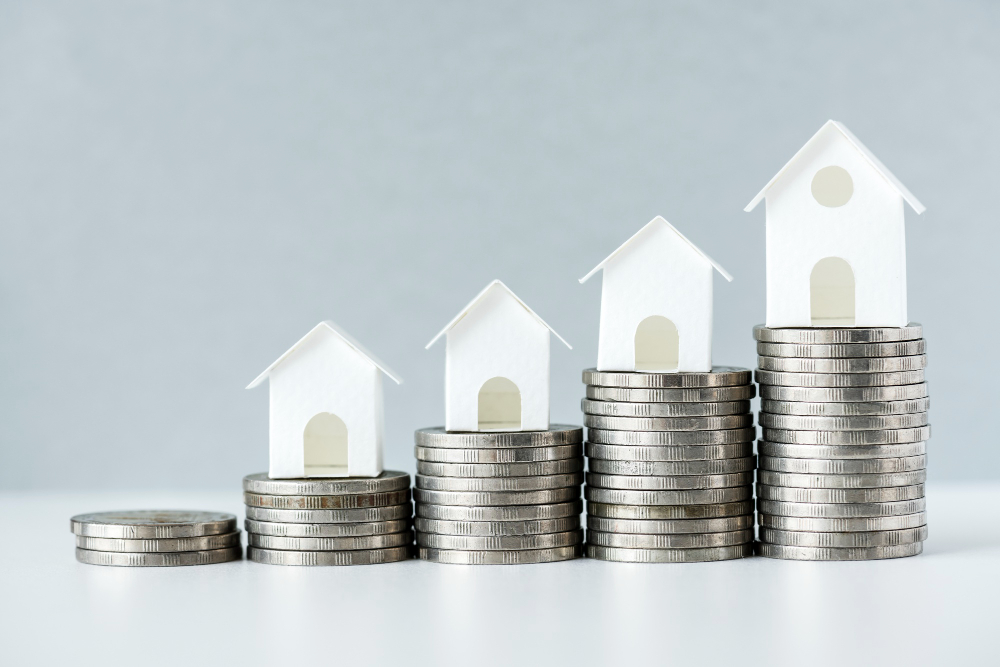Is my investment property worth keeping?
Every time we face financial hardships, we confront the age-old question: Should I sell my investment property? Is it worth keeping the investment property amid all the pressure of rising costs and inflation? As retail interest rates surpass the 6% mark among Australia’s major lenders, many investors are now questioning the viability of holding onto their property investments.
The Reserve Bank of Australia (RBA) reports that a combination of high inflation and stringent monetary policies is increasingly straining household budgets. Since early 2022, real disposable income—the amount of money households has after taxes, interest payments, and inflation adjustments—has fallen by approximately 7%, returning to levels close to those seen before the pandemic. Moreover, most homeowners with mortgages have seen their minimum scheduled payments soar by 30–60% following the initial rate hike in May 2022.
These escalating housing costs, alongside rising expenses for both borrowers and renters, have significantly impacted many Australians. Broad-based cost-of-living pressures are worsening the financial burden. With these economic pressures in mind, this article explores why investors choose to invest, delving into the motivations behind our financial decisions and examining whether maintaining an investment property under current economic conditions is still a prudent financial strategy.
Can we keep up with the Rising Cost?
The “Selected Living Cost Indexes” report from December 2023, published by the Australian Bureau of Statistics (ABS), presents significant insights into wage growth and living cost increases for various household types in Australia. Over the year, employee households experienced the highest increase in living costs, predominantly driven by a notable 40.3% rise in mortgage interest charges, though this rate eased from a peak of 91.6% earlier in the year due to fewer interest rate hikes in the later quarters. This sharp increase in mortgage interest rates primarily impacted those with variable rate loans transitioning from lower fixed rates.

In tandem with wage growth, living costs across all categories rose between 4.0% and 6.9% annually, with employee households facing the steepest increase at 6.9%. This spike reflects the broader economic conditions affecting wage earners who rely primarily on salaries and wages as their income source. Essential sectors like insurance and financial services, housing, and food and non-alcoholic beverages were the primary contributors to the rising living costs, further highlighting the economic strain on these households.
The escalating living costs are prompting many Australians to reassess their financial strategies, especially when it comes to managing investment properties. With mortgage interest rates climbing and the cost of living increasing across several essential categories, individuals and families are facing tough decisions. Many are contemplating whether the potential long-term gains from holding onto investment properties outweigh the immediate financial strain and lifestyle compromises required.
This dilemma is particularly pressing for those whose disposable income is largely consumed by rising expenses, forcing them to consider if maintaining an investment property is feasible without significantly compromising their current quality of life. These considerations are crucial as they navigate the delicate balance between investment growth and personal comfort.
The Goal of Investment Property
Robert Kiyosaki, the author of the influential financial book “Rich Dad Poor Dad,” has articulated a key principle for building wealth that resonates with many aspiring to financial freedom. He famously said, “It’s not how much money you make, but how much money you keep, how hard it works for you, and how many generations you keep it for.” his philosophy is especially pertinent when considering real estate investments. The goal here isn’t merely to earn more, but to strategically invest in a manner that maximises capital appreciation over time.
For those owning or contemplating an investment property, remember: the ultimate aim should be the property’s increase in value, which is largely a function of time. Essentially, when you borrow money to invest in property, you are not just financing a piece of real estate but are purchasing time—time that allows your investment to mature and appreciate in value. Without sufficient current funds to buy this time outright, leveraging bank financing becomes a strategic move to stake a claim in future gains, harnessing the potential for long-term wealth accumulation through smart investing.

For instance, ten years ago, Alex decided to invest in a property located in a growing suburban area. The purchase price of the home was $600,000. To buy this property, Alex took out a mortgage, effectively borrowing money to “purchase time” for the property to appreciate in value.
Over the next decade, the area around the property developed significantly. New schools were built, a shopping centre was added, and transportation links to the city centre improved. These enhancements made the area more desirable, leading to an increase in property values.
By the end of the ten-year period, Alex’s property, which was initially purchased for $600,000, appreciated in value to $900,000. This represents a 50% increase in value, solely attributed to the passage of time, Supply demand and improvements in the local infrastructure and amenities.
What Drives Australian to Take on Large Mortgages?
To understand why Australians opt for large mortgages, we need to look closely at the data. According to the CoreLogic report, over the past 30 years, the Australian property market has experienced significant growth, with dwelling values increasing by an average of 382%, or about 5.4% per year. The decade from 2012 to 2022 has shown notable growth in the Australian property market, with national dwelling values increasing by 72%.
The Australian Bureau of Statistics (ABS) reported substantial growth in the Residential Property Price Indexes for the eight capital cities for December 2021. According to the ABS, the weighted average of these cities saw a quarterly increase of 4.7% and a significant annual rise of 23.7%. This growth contributed to an increase in the total value of Australia’s residential dwellings, which surged by $512.6 billion to a total of $9,901.6 billion. The mean price of residential properties also rose by $44,000, reaching $920,100. The ABS highlights that this data reflects dynamic housing market activities and provides a comprehensive snapshot of the economic landscape related to residential properties across the country.
This robust growth trajectory, highlighted by distinct cycles of expansion and contraction influenced by economic factors, taxation, and monetary policies, explains why many Australians are willing to take on substantial mortgages for property investment. This historical data reassures investors that, despite fluctuations and occasional downturns, the long-term trend in property values tends to be upward. Investors, therefore, see mortgage borrowing not just as acquiring debt but as leveraging time — the time needed for their properties to appreciate in value.
As observed, property values in capital cities surged by 409% over these three decades, and by 294% in regional areas, reinforcing the confidence in property as a sound long-term investment that can yield significant capital gains. This context of steady long-term growth has encouraged Australians to view property investment as a calculated risk well worth taking, banking on historical performance as a predictor of future potential.
Should You Keep Your Investment Property?
Now that you understand the reasons behind purchasing your investment property and taking on a large mortgage, let’s discuss whether it represents a financial burden or if concerns are arising simply because you’re saving less money for emergencies than before.
Loan Repayment Increased: Assessing Your Options
The Reserve Bank of Australia (RBA) typically raises interest rates to control inflation and manage unemployment rates. During this period, workforce generally receives increased wages to sustain inflation and higher rental incomes for landlords, which can offset some of the financial pressures caused by rising rates. For a more detailed discussion on what drives interest rate changes, feel free to read our article, ‘What’s Driving the Interest Rate.’

Understanding Principal and Interest- One of the key factors prompting property investors to consider selling is the transition from interest-only loan terms to principal and interest (P&I) payments. This change significantly affects cash flow as banks begin demanding higher repayments. It’s easy to overlook that taking out a mortgage is not just an expense; it’s also a form of investment. Each mortgage payment comprises two parts: the interest and the principal.
While the interest portion offers the advantage of being tax-deductible for investment properties, the principal payment effectively builds your equity. This isn’t readily available as liquid cash, but it does increase the value of your investment. Importantly, this built-up equity can be converted into liquid assets within a few months, particularly if the property is of investment grade and attractive to the market. Therefore, while the shift to P&I payments may strain monthly budgets, it also accelerates the growth of your investment’s value.
Why You Shouldn’t Sell
- Property Value – You have invested in a property located in a suburb known for its consistent growth, and you have personally witnessed this appreciation. Given the area’s historical performance, you remain confident that the property’s value will continue to increase. If this describes your property, you should consider holding on to your investment. As mentioned above, you may have to dig deep to manage the rising interest rates, accepting a short-term financial burden for long-term gain.
- Tax – It may be tempting to sell your investment property during short-term financial challenges triggered by interest rate hikes, but it’s crucial to consider the broader financial repercussions of such a decision. For instance, disposing of your property could subject you to Capital Gains Tax (CGT). When you sell an investment property, the profit you realize is subject to CGT, which could consume as much as 25% of your gross gain, significantly reducing your net profit. Additionally, think about the ‘Loss of Stamp Duty’ and other acquisition costs. These expenses, including stamp duty and legal fees, represent a substantial investment that you forfeit upon selling. These sunk costs, which cannot be recovered, coupled with potential tax implications, make it essential to weigh the long-term benefits of retaining your property against the immediate financial relief of selling. In many cases, enduring short-term financial discomfort could be more advantageous if the property’s value is expected to appreciate over time.
When You Should Sell
- Borrowed Beyond your Means – It is, however, critical to assess your financial situation carefully. If you find yourself having borrowed beyond your means during a period of market excitement, selling your investment property might be necessary. This is particularly true if the financial strain becomes unsustainable, even with wage growth and increased rental income. Overextending financially can lead to significant cash flow problems, affecting your ability to cover daily expenses such as groceries, utilities, insurance, and housing costs—whether it’s a mortgage or rent.
The first priority should always be to fulfill basic living needs. Only after these are secured should you consider channelling any surplus funds into investments. If keeping up with loan repayments compromises your ability to meet these essential needs, it may be wise to reconsider your investment strategy and possibly divest assets that are causing financial strain.
- Asset Rich, Cashflow Poor: You might be one of those investors who entered early retirement relying on investment income. However, due to rising costs, including interest expenses, this income might no longer support your lifestyle and property expenses. If you own multiple properties and are struggling to manage your loans due to rising expenses, it may be necessary to take action. Consider selling one of your properties to balance your investment portfolio and stabilize your income. For instance, one of our clients, Jane and Tony, are retired with multiple properties. Their property values have grown substantially, which means their land value has also increased significantly, attracting a considerable amount of state tax called land tax. In the majority of states in Australia, the land tax rate is 1.6% above the threshold. This means if Jane and Tony’s land value exceeds the threshold by $1 million, they would pay $16,000 in expenses. Although their investment properties have increased in value by a couple of millions over the last five years, their investment income has not grown enough to keep up with the land tax from the state government. This cost forced them to reduce their investment portfolio and land value to live comfortably.
In conclusion, navigating the complexities of property investment in today’s economic climate demands not only an understanding of market trends and financial data but also a strategic approach to managing your assets. Whether to hold onto your investment property or consider selling depends on a myriad of factors including market conditions, personal financial stability, and long-term investment goals.
If you find yourself uncertain about your cash flow situation or questioning the viability of your property investment strategy, it’s crucial to seek professional advice tailored to your unique circumstances. Contact us at Investax Property Tax Specialists for expert guidance. Our team is equipped to help you analyse your financial position and make informed decisions that align with both your immediate needs and future aspirations. Don’t navigate this complex decision alone, let us help you ensure that your investment choices are sound and strategically planned for the long term.
https://www.aussie.com.au/content/dam/aussie/documents/home-loans/aussie_25_years_report.pdf





